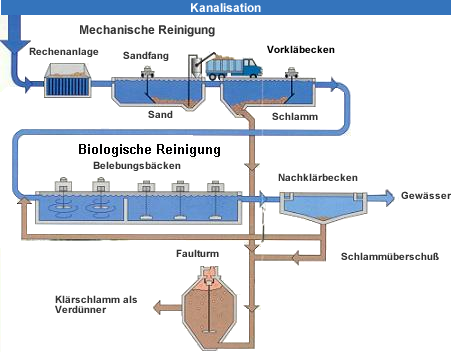My girlfriend and I just moved in an apartment in an all-new house. The architect and the owner decided to heat the house with the following environmently friendly method:
The photovoltaic system on the roof is used for general electricity and the generation of hot water. Thanks to the above-average insulation of the building envelope and the use of a geothermal heat pump, the building is tempered in an energetically sensible and sustainable manner.
.jpeg)
The photovoltaik-connection

The heat of geothermal energy
We live in a quite big flat. Our normal heat source would be oil but in 2017, we built a wood heating source. We only have to use a little amount of wood to last for at least 1 week! Its a cool way to heat our house as you even can cook some food like a pizza in a integrated oven on the right side
.
Our Home has a floor heating source. A surface heating system with pipes on the floor is known as underfloor heating. When hot heating water circulates through the system, thermal energy is released, and the screed in the underfloor heating structure is first heated. The heat then rises into the room through the screed.
The heating surfaces are one of the technology's advantages. Because these are substantially larger than traditional radiators, a lower heating water temperature is sufficient. This allows for more efficient use of renewable energy sources like heat pumps and solar heating, as well as lower heat distribution losses.
When it comes to installing underfloor heating, there are two types of installations: dry and wet. In the dry installation, the heating pipes are close to the surface; in the wet installation, they are hidden beneath a screed layer. A few things must be kept in mind in order for the underfloor heating to work effectively. It's crucial to get the job done right the first time.
This consists of:
an insulating underlay
a support system for the heating pipes
the heating pipes themselves
the heating screed as a heat storage and distribution layer
Targeted heat dissipation is ensured through insulation.
Insulation is the initial layer of the underfloor heating system's structure. This stops the heat from being transferred to neighboring rooms. It is commonly found on the unfinished floor and can be augmented with basement ceiling insulation above unheated areas. A waterproof foil is often used under the insulation to protect the unfinished floor. The insulation thickness is determined by the type of room below. A coating of roughly 30 millimetres (WLG 035) is sufficient if the space is heated. If there is soil or an unheated room beneath the underfloor heating, the same thermal conductivity group requires 45 millimetres.

My house is heated with oil, which means my heat source would as well be oil. It is a really old house, that's why we don't have any other type of heat source.
How does it work?
A heating system that uses oil for fuel relies on several different components to properly heat a home. The components that are often part of an oil-fueled heating system are:
- Oil tank: The oil tank stores the oil until it needs to be used by the heating system. Oil tanks are available in a variety of sizes and shapes, including horizontal and vertical tanks. They might be located above or underground.
- Filter: The filter removes sediment and debris from the oil as it flows from the tank to the heating system.
- Fuel pump: The fuel pump controls the movement of the oil from the tank to the heating system.
- Combustion chamber: The combustion chamber is where the oil is ignited, so that it can warm either water or air, depending on the type of system in place.
- Thermostat: The thermostat measures the temperature in a particular area of a house. When the temperature falls below the set level, the thermostat triggers the heating system to kick on.
When an oil heating system gets the signal that it needs to warm up a house, the oil gets pumped from the tank into the combustion chamber. Usually, the oil is under a lot of pressure as it enters the chamber. Once in the combustion chamber, the oil is lit on fire. Although older oil heat systems featured a pilot light that was burned continually, newer models feature electronic ignition. A flame is only lit when the heating system is running through a cycle.

Sources:
How does oil heat my home? (smoenergy.com)
Our property management uses oil heasting to heat the apartments.


Source: HeatingOil [eia.gov]
Tiziano Di Paola
Our heating source at home is oil heating. It says that oil heating is the most climate-damaging form of heating. However, according to the Federal Statistical Office in Switzerland there are still 39.4 % of households used oil as their main energy source for heating their buildings (2017). Compared to the years 2000 (57.8 %) and 1990 (60.9 %) there is now less oil heating used as heating source than 20 years ago.
This is how my heating source looks like:

Another heating source had incredibly increased: The heat pump. In the last 20 years it had an increase of about 15 % (from 2 % to 17.9 %).
How does oil heating work?
When the oil heats, it moves from the tank to the burner through a pump, and it becomes a warm mist mixed with the air. The fuel and air mix go into the burner, where it creates flames in the combustion chamber. The oil heats the air or water that heats your home, depending on the type of heating system you have.
Source: Energy field [bfs.admin.ch]
Source: Sperr's Fuel and Heating [sperrs.com]
Voting for the city tree laboratory >here (mitwirken.stadt-zuerich.ch)

Bäume sammeln - Bäume kennen - Bäume schützen.
"Stadtideen" ist ein Projektwettbewerb der Stadt Zürich und bis am 7.11. dürfen alle Personen, die in Zürich leben, arbeiten oder ihre Freizeit verbringen für ihre 5 Lieblings-Stadtideen abstimmen, die sie in Zürich umgesetzt sehen möchten.
Wir freuen uns über Ihre Stimme zu unserer Idee «Quartierlabor Stadtbäume sammeln». Das Abstimmungsprozedere ist zugegeben etwas aufwändig - anbei eine Mini-Anleitung (PDF).
fuer-stadtideen-abstimmen_how-to.pdf (439.40 kb)
For the point "Chemical Cleaning" we will have the following concept:
1. Putting in pictures
2. Describing the process of "Chemical Cleaning" and what "Phosphate" is
3. Find a conclusion
4. Do a presentation with a surprise
Indi and Daniel
Our group is focusing on the 6th step of an water treatmant plant, which is the cleaning part. We divided the steps in more sub-parts;
- Mechanical cleaning
- Biological cleaning
- Chemical cleaning
We want to explain how these steps work and what is done in each step.

The ARA Wetzikon is a water treatment plant located at the edge of Wetzikon.
it is designed for arround 37k peoples, but is allready used arround 120%!
The ARA Wetzikon also treats water for Hitnau and Pfäffikon.

https://www.wetzikon.ch/verwaltung/bau-planung/tiefbau/stadtentwaesserung